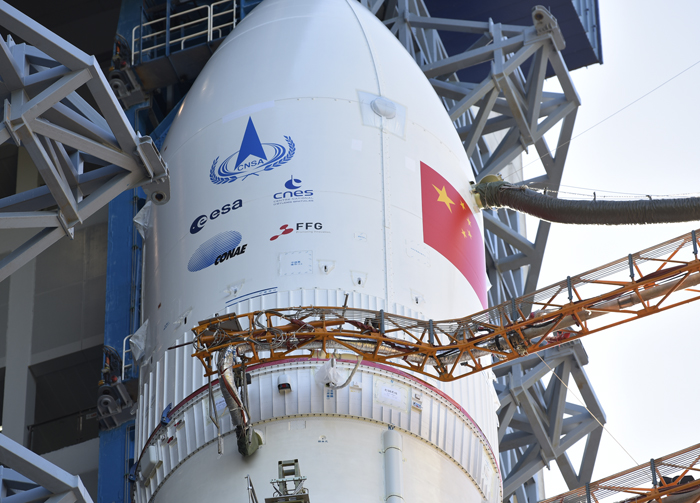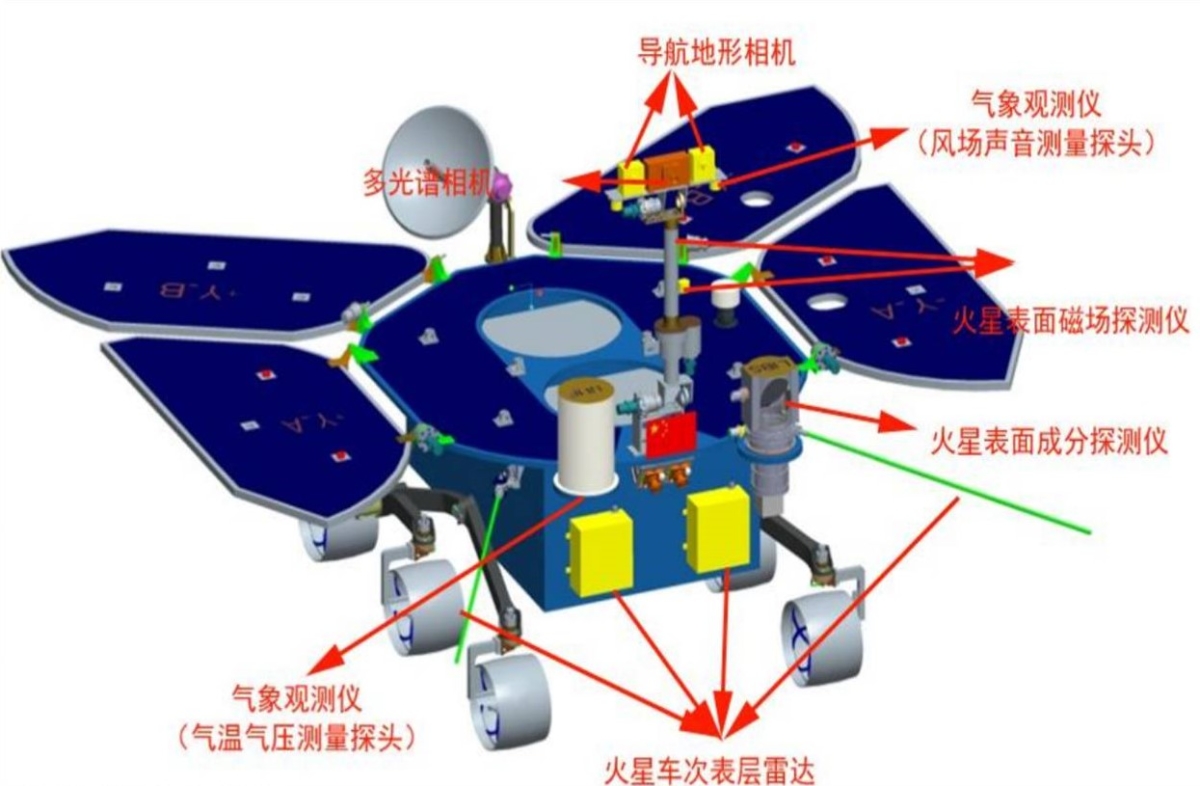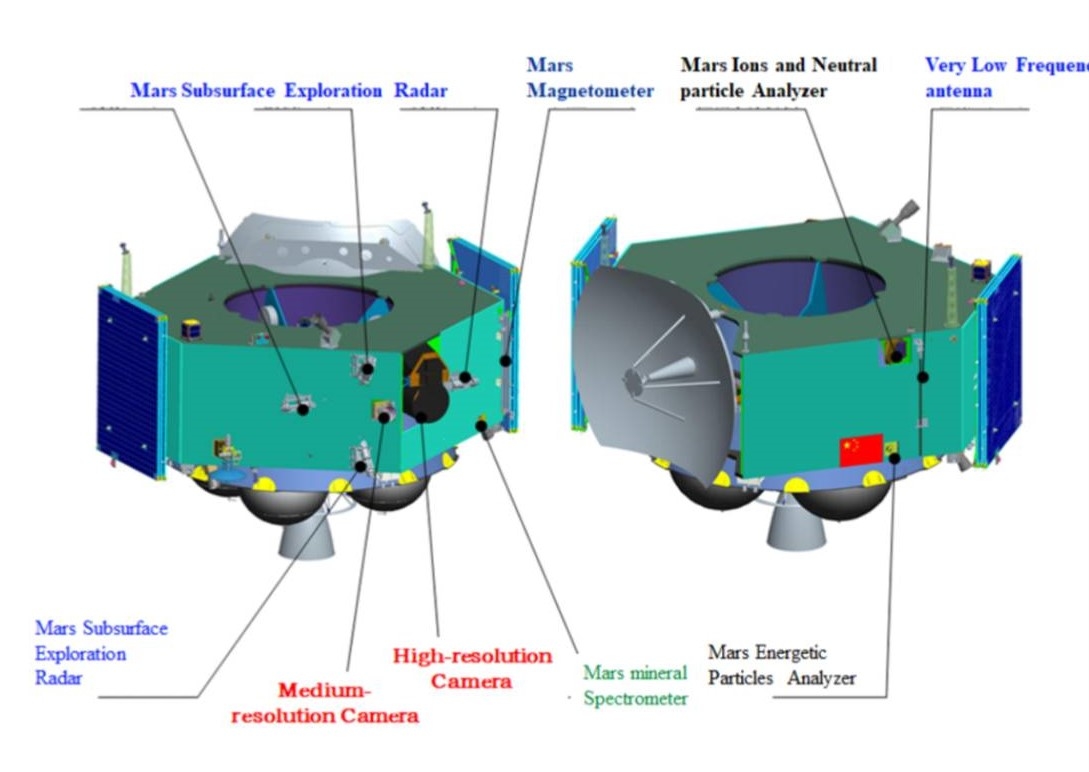China's Tianwen-1 Mars mission rolls out to launch pad (photos, video)

Tianwen-1 will launch in late July or early August.

China's first fully homegrown Mars mission, Tianwen-1, rolled out to its launch pad at the Wenchang Space Launch Center in south China's Hainan Province today (July 17).
A Long March-5 rocket will launch Tianwen-1 in late July or early August, according to the China National Space Administration. Speculation has it that liftoff is slated for July 23, the opening of the launch window.
It took about two hours to vertically transport the Long March-5 and its precious payload to the launching area of the center on Friday morning, China's state-run Xinhua news agency reported. The launch team will conduct final tests on the rocket before liftoff.
Related: This is the 1st photo of China's Mars explorer launching in 2020
The Long March-5 has a handful of experimental launches under its belt, but Tianwen-1's liftoff will mark the rocket's operational debut, the Xinhua story added. The rocket is expected to send Tianwen-1 into an Earth-Mars transfer orbit, another first for the Long March-5.
Tianwen-1 is ambitious, aiming to complete orbiting, landing and roving all in one mission, and to obtain scientific exploration data on the Red Planet.
"Testing for all the technical items on the rocket, the Mars rover and the launching area has been completed so far," Li Benqi, command member for the Long March-5 launch mission, told China Central Television (CCTV). "While the rocket is at the launching area, our preparations are focused on filling fuel into the rocket and ensuring a good final state of the rocket and the rover. Then we'll enter the launching procedures."
Breaking space news, the latest updates on rocket launches, skywatching events and more!

Ge Xiaochun, chief engineer at the China National Space Administration, told CCTV: "The Mars probe is the first step of China's planetary exploration project. The coming launching mission has been highly recognized and supported by the international community."
Ge said that "the vertical transport of the rocket to the launching area has shown that we have made good preparations for the launching mission. We will stick to the strict and careful working attitude in the coming days."
Long Lehao, carrier rocket expert at the China Academy of Launch Vehicle Technology, told CCTV: "The rocket will simultaneously carry the Mars orbiter, lander and rover into space. Such a comprehensive launching mission for Mars exploration will also be the first in the world, so we're looking forward to it."
You can watch the rollout in this CGTN video.
Related: Latest news about China's space program

Candidate landing site: Utopia Planitia
A new Nature Astronomy paper, "China's first mission to Mars," outlines details about Tianwen-1, including:
- The Tianwen-1 probe has a mass (including fuel) of about 5 tons.
- The orbiter will provide a relay communication link to the rover, while performing its own scientific observations for one Martian year. The orbit during the scientific observation stage is a polar elliptical orbit measuring 165 miles by 7,500 miles (265 by 12,000 kilometers).
- Tianwen-1 is expected to reach Mars around February 2021, and the scientific observation phase will start in April 2021.
- The lander/rover will perform a soft landing on the Martian surface two to three months after arrival of the spacecraft, with a candidate landing site in Utopia Planitia. This is the Martian region where NASA's Viking 2 lander touched down on Sept. 3, 1976.

13 scientific instruments
The roughly 530-lb. (240 kilograms) solar-powered rover is nearly twice the mass of China's Yutu lunar rovers and is expected to be in operation for about 90 Martian days. (One Martian day, or sol, is about 40 minutes longer than an Earth day.)
There are 13 scientific payloads in the Tianwen-1 mission in total.
The seven instruments on board the orbiter are two cameras, the Mars-Orbiting Subsurface Exploration Radar, Mars Mineralogy Spectrometer, Mars Magnetometer, Mars Ion and Neutral Particle Analyzer and Mars Energetic Particle Analyzer.
The six instruments installed on the rover are the Multispectral Camera, Terrain Camera, Mars-Rover Subsurface Exploration Radar, Mars Surface Composition Detector, Mars Magnetic Field Detector and Mars Meteorology Monitor.
Comprehensive mission
According to the new paper's authors, "Tianwen-1 is going to orbit, land and release a rover all on the very first try, and coordinate observations with an orbiter. No planetary missions have ever been implemented in this way. If successful, it would signify a major technical breakthrough. Scientifically, Tianwen-1 is the most comprehensive mission to investigate the Martian morphology, geology, mineralogy, space environment, and soil and water-ice distribution."
China developed one Mars probe before Tianwen-1, an orbiter called Yinghuo-1 that launched with Russia's Phobos-Grunt mission in November 2011. Phobos-Grunt suffered a launch failure and never made it out of Earth orbit.
Leonard David is the author of "Moon Rush: The New Space Race," which was published by National Geographic in May 2019. A longtime writer for Space.com, David has been reporting on the space industry for more than five decades. Follow us on Twitter @Spacedotcom or Facebook. This version of the story published on Space.com.

Leonard David is an award-winning space journalist who has been reporting on space activities for more than 50 years. Currently writing as Space.com's Space Insider Columnist among his other projects, Leonard has authored numerous books on space exploration, Mars missions and more, with his latest being "Moon Rush: The New Space Race" published in 2019 by National Geographic. He also wrote "Mars: Our Future on the Red Planet" released in 2016 by National Geographic. Leonard has served as a correspondent for SpaceNews, Scientific American and Aerospace America for the AIAA. He has received many awards, including the first Ordway Award for Sustained Excellence in Spaceflight History in 2015 at the AAS Wernher von Braun Memorial Symposium. You can find out Leonard's latest project at his website and on Twitter.
